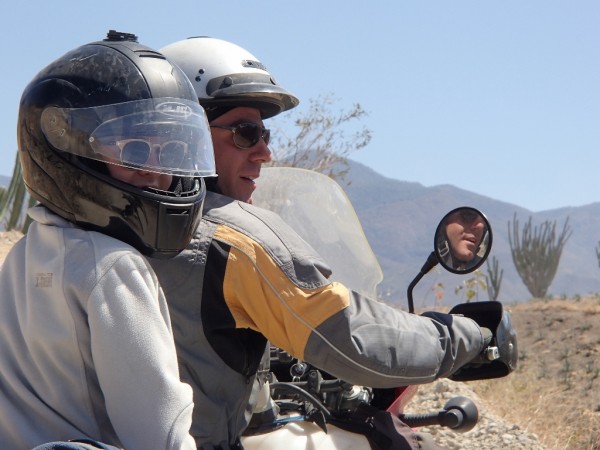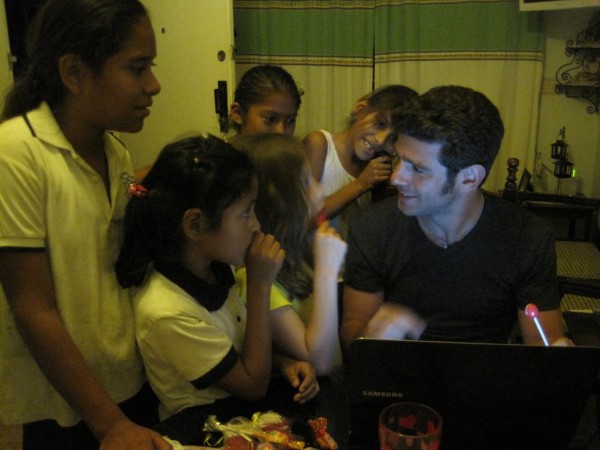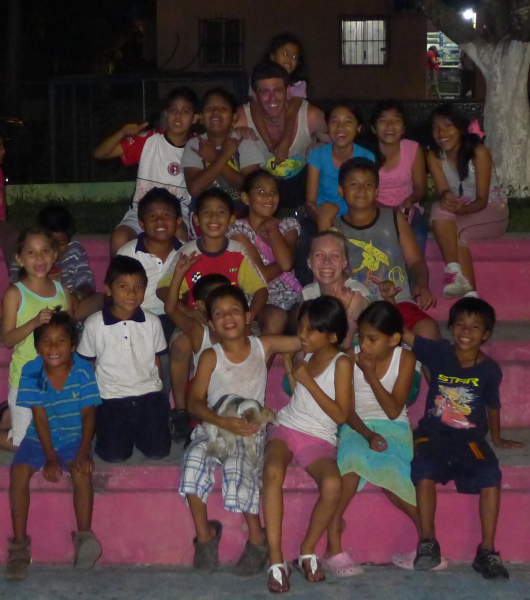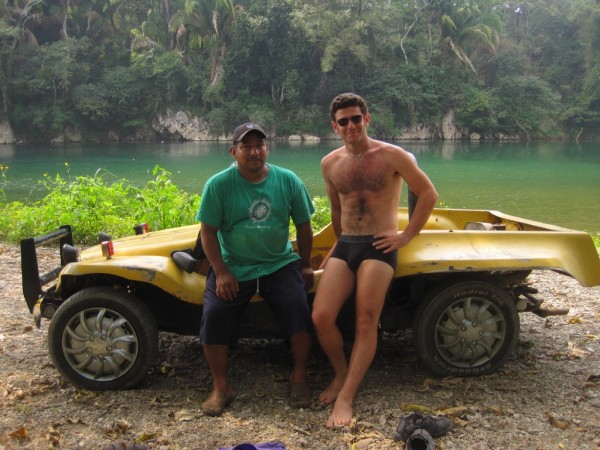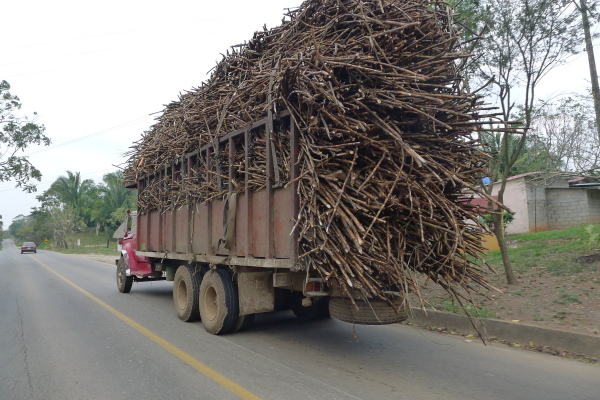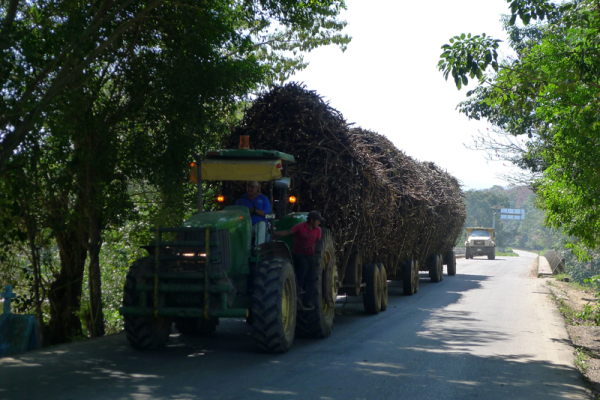This chapter of my journey involves Ida. It is incredible how, after knowing each other for only a week, we are very much like an old couple. We do everything together, we enjoy each other’s company and make each other laugh constantly, we ride through beautiful landscapes at sunset, swim in virgin rivers… but always as friends.
Ida and I arrived in Tuxtepec, Oaxaca after months of anticipation. So far every Mexican I’ve met has proclaimed either Chiapas (my next state) or Oaxaca to be their favorite part of Mexico. Though we are still on the east side of the Sierra Norte which separates the steamy lowlands of Veracruz and Tobasco and the cooler elevations of the rest of Oaxaca, the people are already everything I heard they would be.
The great divide between the rich and poor is more apparent here than any other state I have visited so far. Almost every single person I’ve met has either been, or has a family member who is, an illegal worker in the U.S. Oaxaca is a beautiful and diverse state, with good fertile soil and clean rivers. But it is mostly farm land of one type or another and therefore there are those who own the farms and factories, and those who work there – there is almost no middle class. There are many artisans but they generally subsist around the poverty line like most other Oaxaqueños.
We are staying with Magdaleno and his family; but it feels like we are staying with the entire neighborhood. He introduces us to everyone, we have met almost 100 people in the last couple of days. From children to adults to family members… we have quickly become a part of their community. We spent hours playing with the kids last night – everything from futbol, basketball, tag, to general goofing around and roughhousing. I have spent every night playing with them so far. But the sweetest moments have been those lulls in craziness when we just sit and talk. Their laughter rings through the dense air and lifts me from my languor. Dripping with sweat and tired I still play and run around, I am filled with as much joy as they. It has been so long since I have been in a place where kids can run around freely without fear, where they can be kids as kids ought to be.
As is often the case with families from Oaxaca, Magdaleno’s father is in the U.S, as are a few cousins and uncles. Regardless of the money he sends home every month Magdaleno works and goes to school, his mother makes empanadas to sell on the side of the road, and Magda’s girlfriend comes during her lunch break at nursing school to help her future (hopefully) mother in law make and sell the empanadas. All of their hopes and dreams lie with the younger siblings for whom they are saving to build a future. For families who have not had generations cross the border in order to build some sort of financial base, the older siblings are generally left in a limbo between work and school. Most try as hard as they can to get as far as university, and hope that no disaster strikes forcing them to drop out and work full time. This constant state of the unknown allows them (if not forcibly) to live for today. This is reflected in everything they do and how they treat those around them.

As has been true from the very beginning, it is those with the least who are the most generous. Everyone we’ve met lives around the poverty line, and yet it takes a great effort for us to buy something. Basically we have to go out of our way, and sneak around, to buy anything. Otherwise the beer and food would flow unendingly for as long as we wanted. It matters not if it is all the money they have, they want us to feel welcome and to enjoy ourselves, and feel it is their responsibility to make sure that happens.
On one of our day trips to the nearby river, we met a local who was driving along the shore in his buggy. Ida mentioned she was trying to find an old coconut (coconuts which have fallen to the ground and have not been touched for a few months –the meat mixes with the water to form a delicious cotton like substance). The friend ran off right away and came back in about 15 minutes with two old coconuts. Then we started talking about food, and they mentioned there is a cheese made in their village (Chiltepec), again the friend ran off and brought back a kilo of fresh cheese, a pack of handmade tortillas and a bottle of coke. Thankfully Ida managed to slip him some pesos before he left. Then the local drunk joined us for conversation and food.
The day before we had gone to the source of the river at Zuzul. The water was perfectly clear and clean, and of the perfect temperature and sweetness. We spent hours walking and swimming and breathing in the clean air which is such a rare find in Mexico. On the way back, near every single bridge, we saw women and daughters as young as 7 doing their laundry; and men, women and kids bathing. The river is everything, and sadly it is also a point of refuse. Fortunately, close to the source it is clean and pure, and a few thousand people cannot contaminate the flowing water very easily, but the further you go, and as the river bends around more and more farms and factories, it slowly becomes undrinkable, and even un-swimmable. Again and again I bear witness to a complete disregard for nature.
This is the tropical, extremely hot and humid, part of Oaxaca. Sugar cane, bananas, pineapple, mango, and dozens of other tropical fruit grow here. The landscape is lush and diverse – with a mix of temperate and tropical trees, and everything in between. Tamarind and rubber trees, palms – what look like cherry blossoms, cloud forests, farms, grazing cows… metal and wooden shacks in danger of collapsing with every strong gust, hung with bright laundry flapping in the wind dot the rolling hills and climbing peaks. The contrast of gorgeous landscape and great poverty is very stark here.
With a burning desire to seek the cooler climes of Oaxaca’s elevated plateaus and valleys, Ida and I bid a sad farewell to the community which welcomed us so warmly. For her the next day would be a tranquil bus ride through twisty mountain roads which eventually end in the capital, for me those very roads would simultaneously spell awe, wonder and constant brushes with death. It seems Oaxaca is determined to embody and manifest the yin-yang everywhere and in everything.
